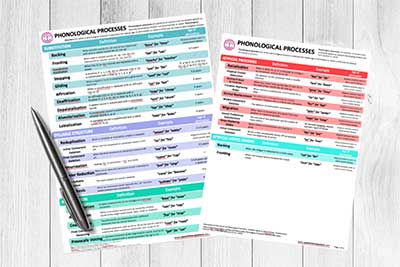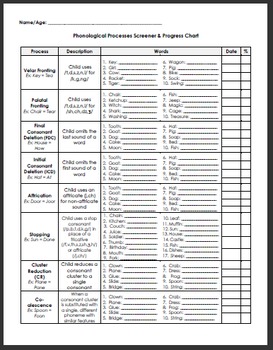

We speech therapists would say that his/her speech shows a delay because that process typically ends in children by the age of 3.ĭifferent Types of Phonological Processes Type 1: Substitutions For example, a child with a phonological disorder uses the phonological process of “reduplication,” like saying “wawa” for “water” by the age of 4. Young children form these patterns because they do not yet have the skills to produce the words accurately and clearly.įor example, you may hear children say the word, “plane,” but it comes out at “pane.” They may also delete sounds in the word, such as “nana” for “banana.” There are many different patterns that can occur in a child’s speech, which is “normal” while their language develops.Ī phonological disorder occurs when the patterns the child uses exist beyond the period of time that “typical” children have stopped using them, or when the errors are even more different than expected. Typically, there are speech patterns that developing children use when they are learning speech sounds. Although some young students will pick up these skills with relative ease during the kindergarten year - especially if the curriculum includes explicit activities - other students must be taught these metalinguistic skills directly and systematically.Definition and Explanation of Phonological Processes Only 29 percent could blend single phonemes into whole words. The production of rhymes was more difficult for 5-year-olds than commonly assumed, as only 61 percent could give a rhyming word for a stimulus. Only 7 percent of 5-year-olds who had not yet had kindergarten could segment phonemes in spoken words. Paulson (2004) confirmed the hierarchy of phonological skill acquisition in 5-year-olds entering kindergarten. Sound deletion (medial and final blend positions) Sound deletion (initial position, include blends) Sound deletion (initial and final positions) Phoneme substitution to build new words that have simple syllables (no blends) “Say the word slowly while you tap the sounds.” Phoneme segmentation of words that have up to three or four phonemes (include blends) “Say the word as you move a chip for each sound.” Phoneme segmentation of words that have simple syllables with two or three phonemes (no blends) “Say the first sound in ride (/r/) sock (/s/) love (/l/).” Matching initial sounds isolating an initial sound “Tell me a word that rhymes with car.” ( star) Show sequences of single phonemes with colored blocks: /s/ /s/ /f/ /z/ /sh/ /z/.
Age of phonological processes series#
That’s not right!”ĭistinguishing and remembering separate phonemes in a series “Seven silly snakes sang songs seriously.” Rote imitation and enjoyment of rhyme and alliteration Ages at which 80-90 percent of typical students have achieved a phonological skill Manipulate phonemes by removing, adding, or substituting sounds (e.g., “Say smoke without the /m/”). Segment the phonemes in two- or three-sound words, moving to four- and five- sound words as the student becomes proficient (e.g., “The word is eyes. Segment and produce the initial sound, then the final and middle sounds (e.g., “What sound does zoo start with?” “Say the last sound in milk” “Say the vowel sound in rope”).īlend sounds into words (e.g., “Listen: /f/ /ē/ /t/. Identify and match the initial sounds in words, then the final and middle sounds (e.g., “Which picture begins with /m/?” “Find another picture that ends in /r/”). Recognizing a rhyme is much easier than producing a rhyme. The ability to produce a rhyming word depends on understanding that rhyming words have the same rime.

Responsiveness to rhyme and alliteration during word playĮnjoying and reciting learned rhyming words or alliterative phrases in familiar storybooks or nursery rhymes.Ĭounting, tapping, blending, or segmenting a word into syllables. It is not so much a phonological skill as a semantic (meaning-based) language skill. Note: This semantic language skill is much less directly predictive of reading than the skills that follow and less important to teach directly (Gillon, 2004).


 0 kommentar(er)
0 kommentar(er)
